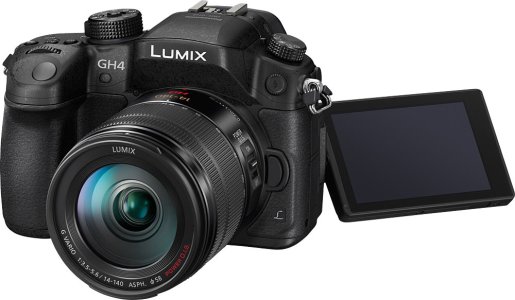 As I wrote in my last post, I have a Panasonic Lumix DMC-GH4. You can look that up if you want all the gory details, but this is a hybrid (stills and video) micro four thirds camera announced in February 2014. That means it’s over five-and-a-half years old. Nothing wrong with that, as it still works like it did the day it was introduced. With all its firmware updates, it works even better.
As I wrote in my last post, I have a Panasonic Lumix DMC-GH4. You can look that up if you want all the gory details, but this is a hybrid (stills and video) micro four thirds camera announced in February 2014. That means it’s over five-and-a-half years old. Nothing wrong with that, as it still works like it did the day it was introduced. With all its firmware updates, it works even better.
Why buy this camera?
- Cost – The price of the body has dropped from its introductory MSRP of US $1,700, body only, to US $700. That’s right, it’s $1,000 cheaper than it was five years ago.
- Overall Quality – When it was first introduced it was considered the bee’s knees with regards to overall quality. Reviewers raved about it, and DPReview gave it a Gold Award. Even after five years, and for $700, it’s still a damn fine camera.
- Build Quality – Unlike the newly announced Olympus OM-D E-M5 Mark 3, or the earlier Panasonic Lumix G95, the GH4 is solid metal magnesium with plenty of environmental sealing. The E-M5.3 is all plastic, while the G95 only has magnesium on the front panel.
- Ergonomics – A fancy word to wrap up how it feels when you use it. When used the way it was intended to be used it feels and operates superbly.
- Performance – It auto focuses and shoots stills and videos (in 4K) with superb performance.
I’m beyond spending large sums of cash for camera equipment (it’s a thin line indeed if you consider $700 not a large sum of cash; it depends on what bills are due at the end of the month vs how much is left in checking). The GH4 is still on sale, new in a box, at places like B&H Photo. And there are plenty of inexpensive zooms and primes you can use with the body.
If you look for one used, if it’s in good condition or better, it will usually sell for $200 to $300. If you can find one from a reputable dealer in good to excellent condition then that’s also an excellent buy. But the catch is finding it in good to excellent condition.
As for lenses, may I make just two recommendations. The first is the Panasonic Lumix G 25mm f/1.7 ASPH. Lens. Normally retailing for $250, there are many times it’s on sale for $100 off, bringing the price down to a reasonable $150. It’s equivalent to 50mm in 35mm film, and at f/1.7 is decently fast in low light. In normal light it’s great. It’s only “flaw” is lack of in-lens image stabilization, but that won’t be a problem in regular lighting, and for low lighting you can get good results with a bit of what Ming Thein calls “shot discipline.” That’s what we all practiced back in the days of film to get those sharp images in low light.
The second is the Panasonic Lumix G Vario 45-150mm f/4-5.6 ASPH. MEGA O.I.S. Lens for $250. This is the regular price. It’s 2 1/2 stops slower than the 25mm at 14mm, and it’s $100 more. But it has in-lens stabilization (that’s what MEGA O.I.S means), and it covers a range of focal lengths from wide angle to long telephoto. It’s a decent travel lens for both stills and video.
The only other item I would recommend is a second Panasonic battery for the GH4. And get the Panasonic battery. Third party batteries are junk and fail when you need them most. As for a camera strap, use the one that comes in the box with the camera. Don’t be an effete snob and get a “proper” camera strap. The Panasonic’s are more than strong enough, and nobody will give hoot in hell if the word “Panasonic” is stitched across your camera strap. If they do then they deserve to be avoided at all costs.
The GH4 hits all the good points for a camera: built like a tank, excellent stills and video capture, a huge catalog of lenses to chose from, and all for a decent price point. The question not asked is why is this five-year-old camera still in the market for $700? The answer is the market for cameras like this is collapsing, and for everyone, not just Panasonic. Everything is at fire-sale prices to cut down on inventory in the channel and on store shelves. Once that inventory is down, the prices for what’s left starts heading up into the thousands just for the body. So if you’re in the market for a good interchangeable lens camera get it now while you can.
Or else wait a year for the prices on Apple’s iPhone 11 to drop and get one of those. The latest iPhone camera is awesome. The camera software still has some issues with portraiture (i.e. the computed bokeh still wipes out detail near the subject it shouldn’t) but when it works, it works quite well. The GH4 with that 25mm lens will provide the same capability wide open, and do it without the flaws that are sometimes introduced with all computational photography.


You must be logged in to post a comment.